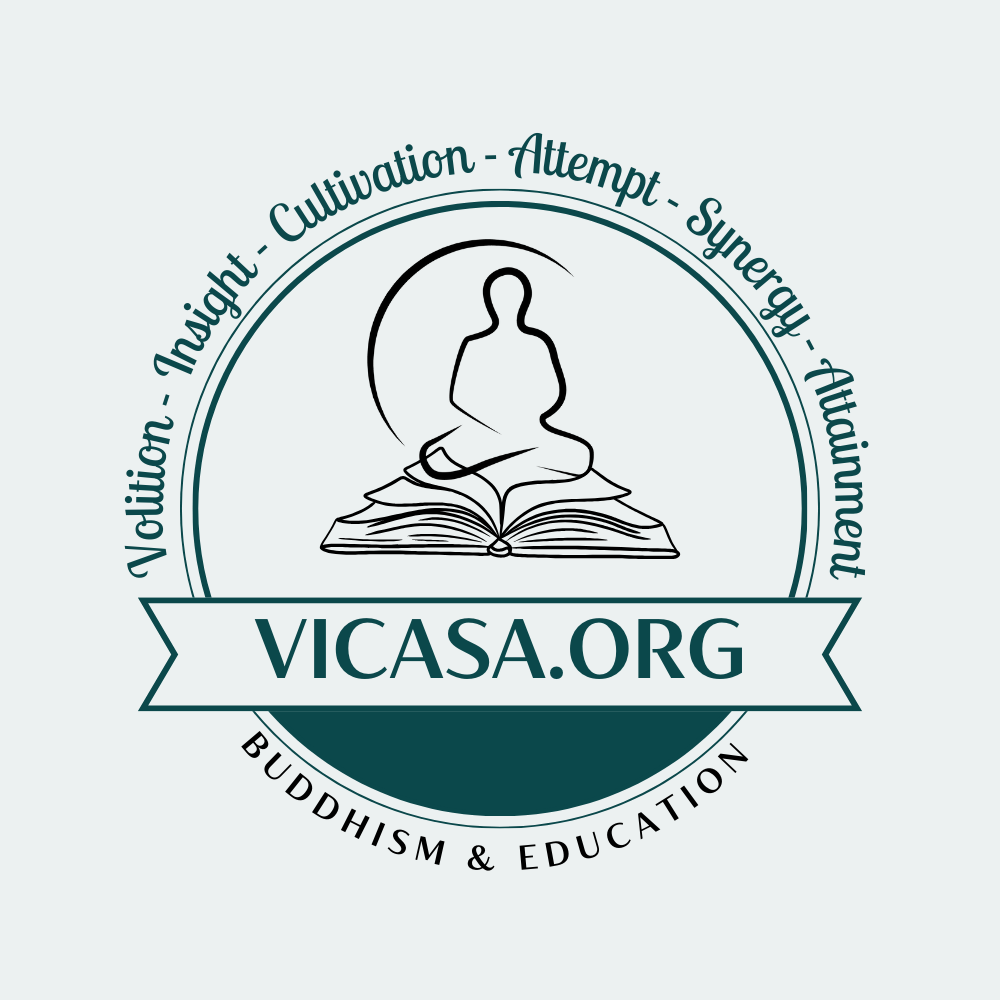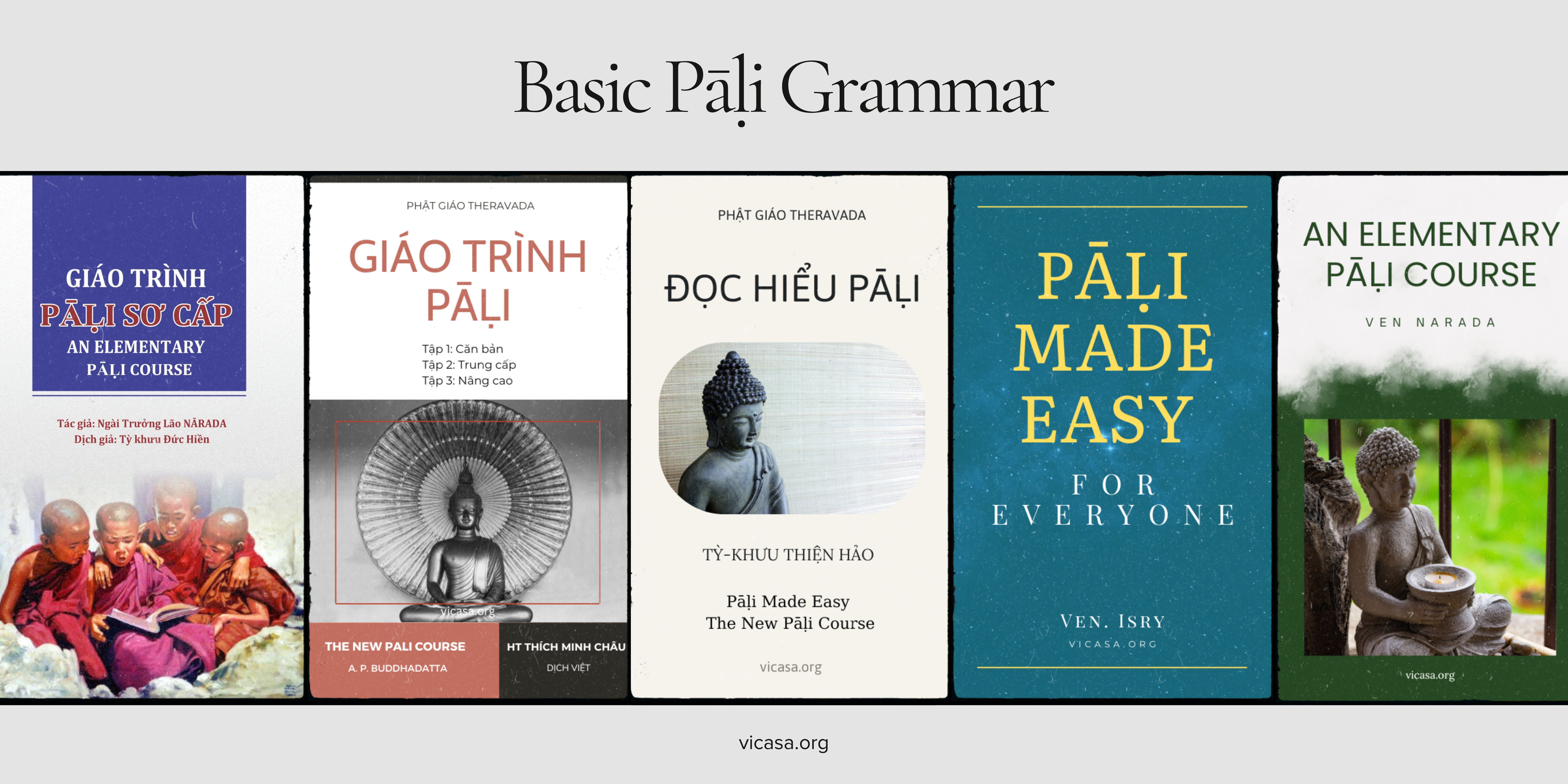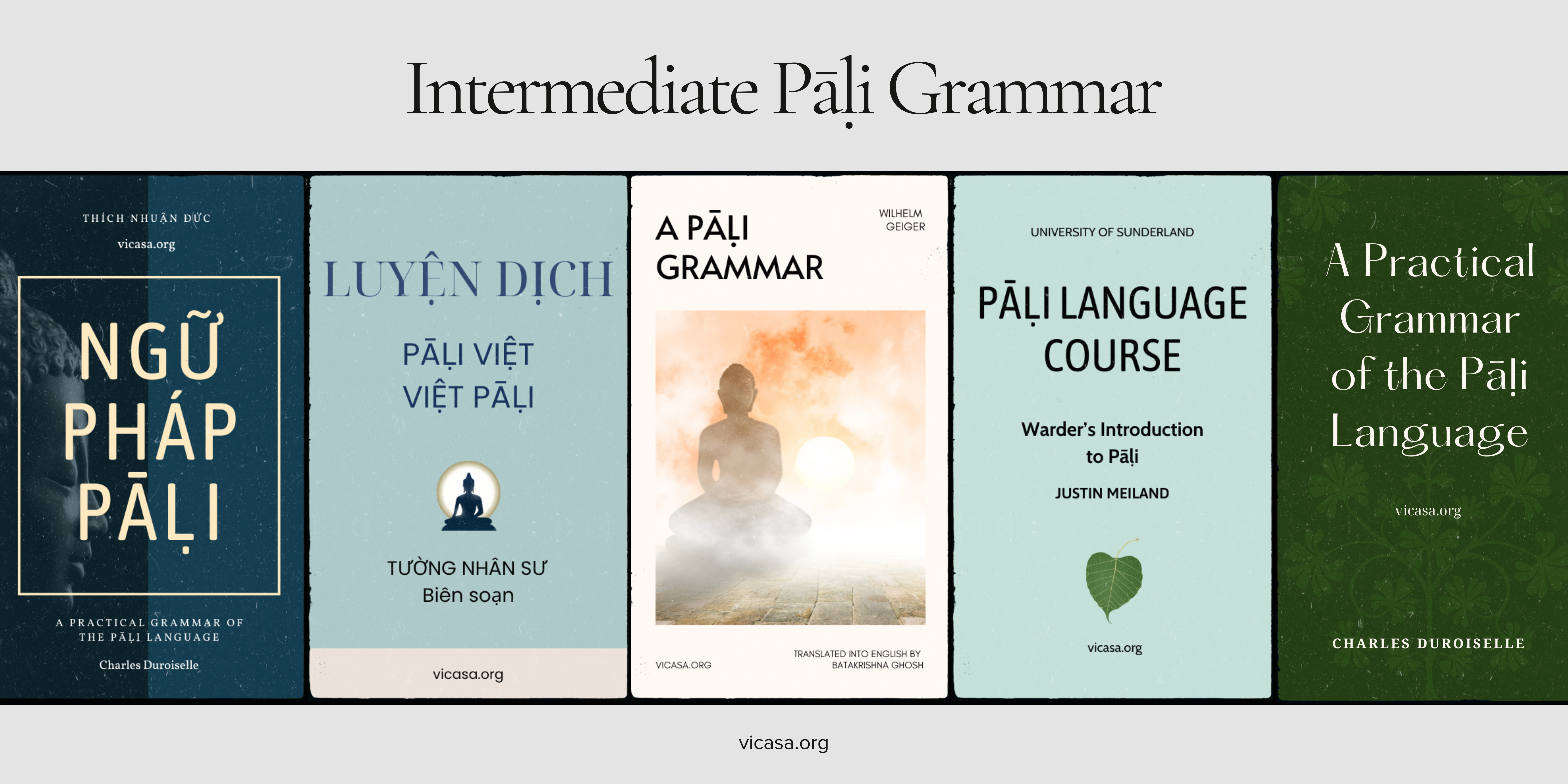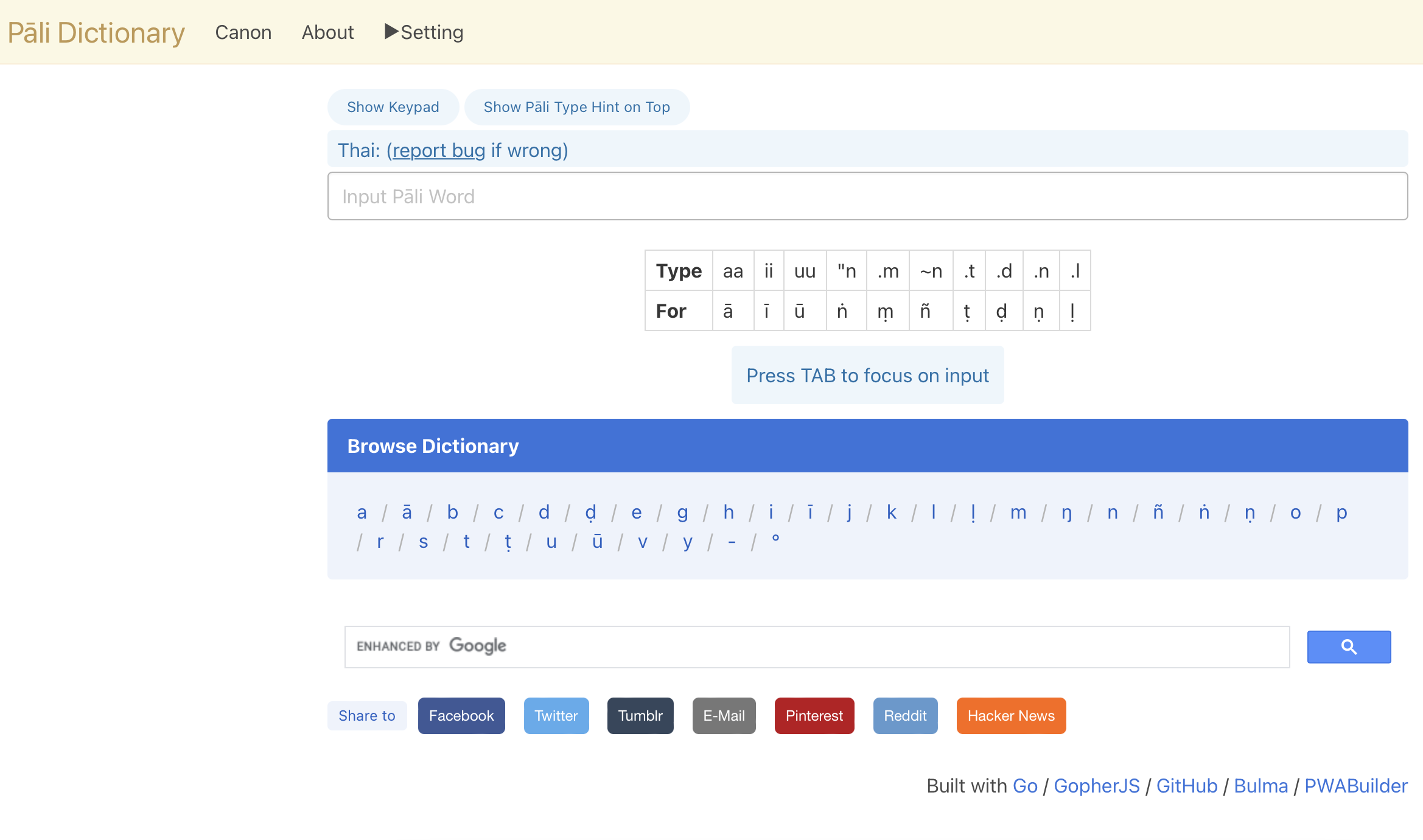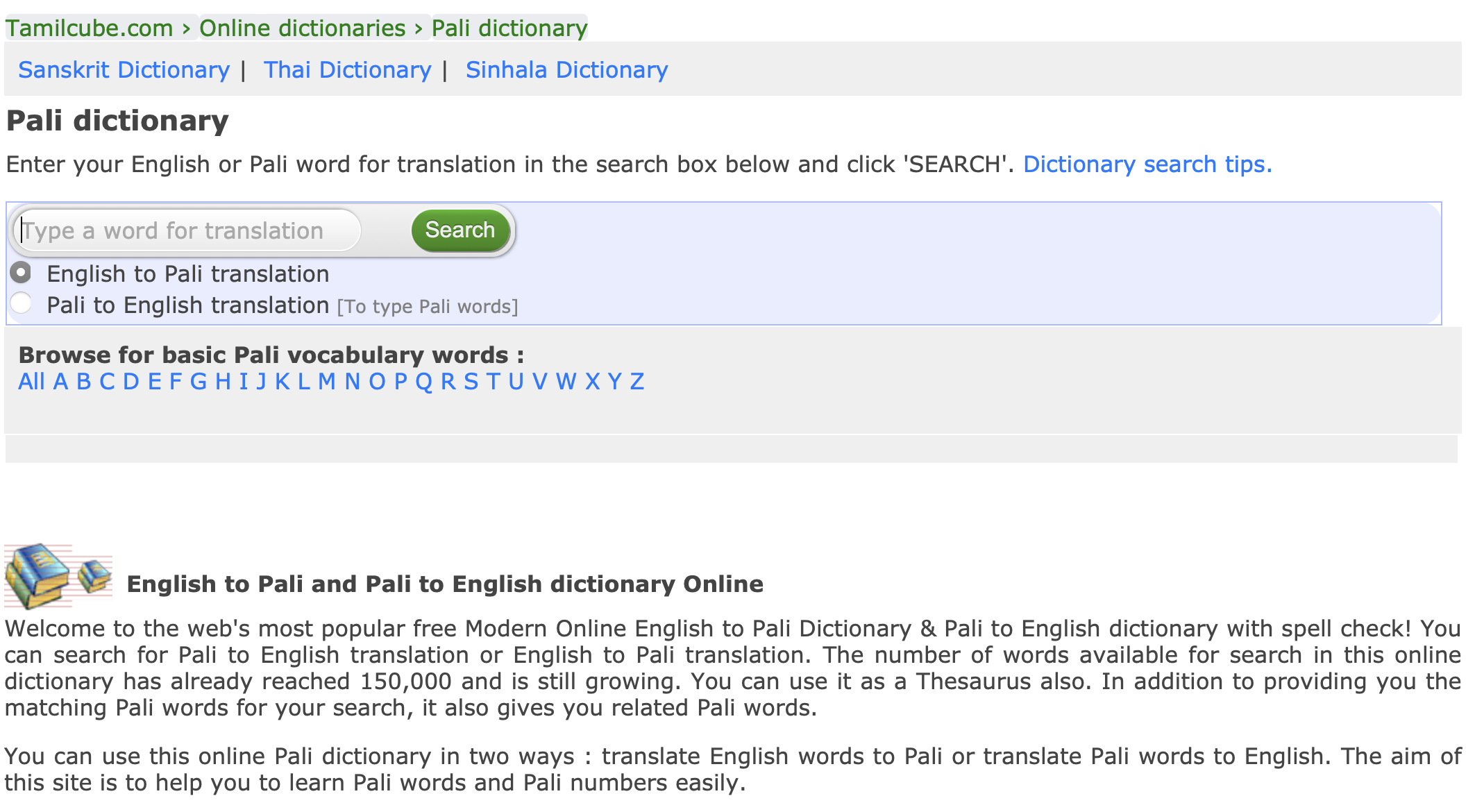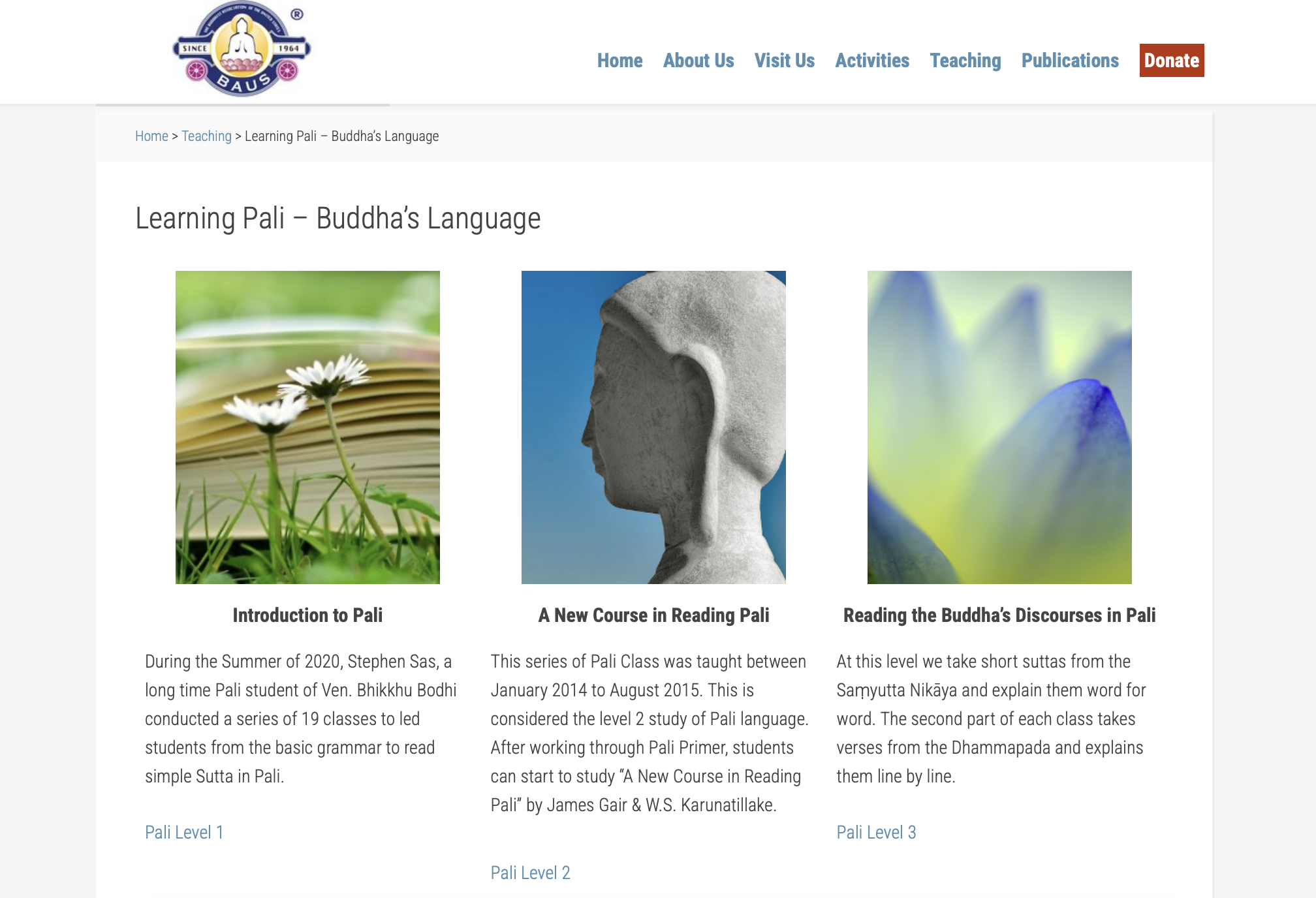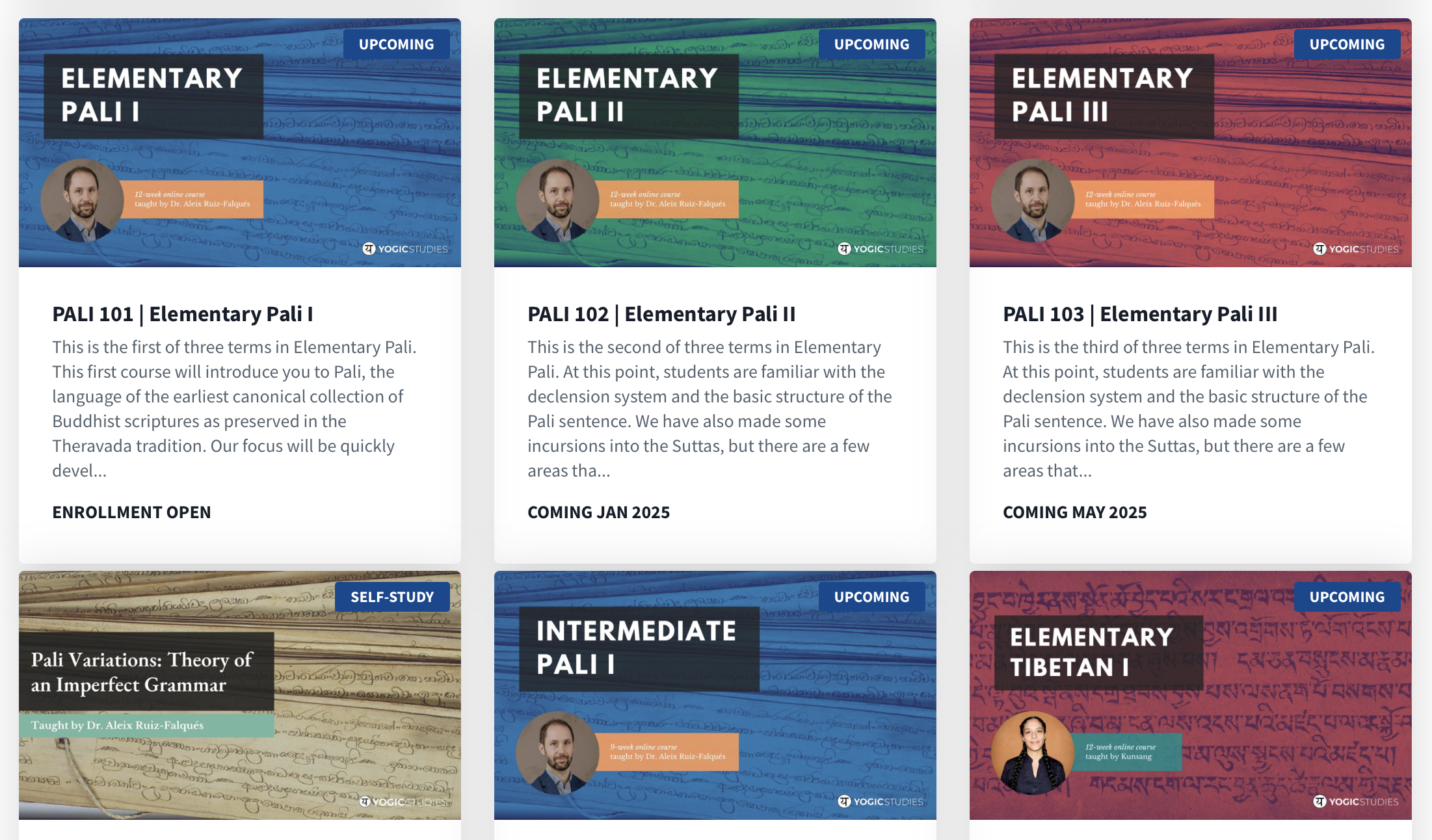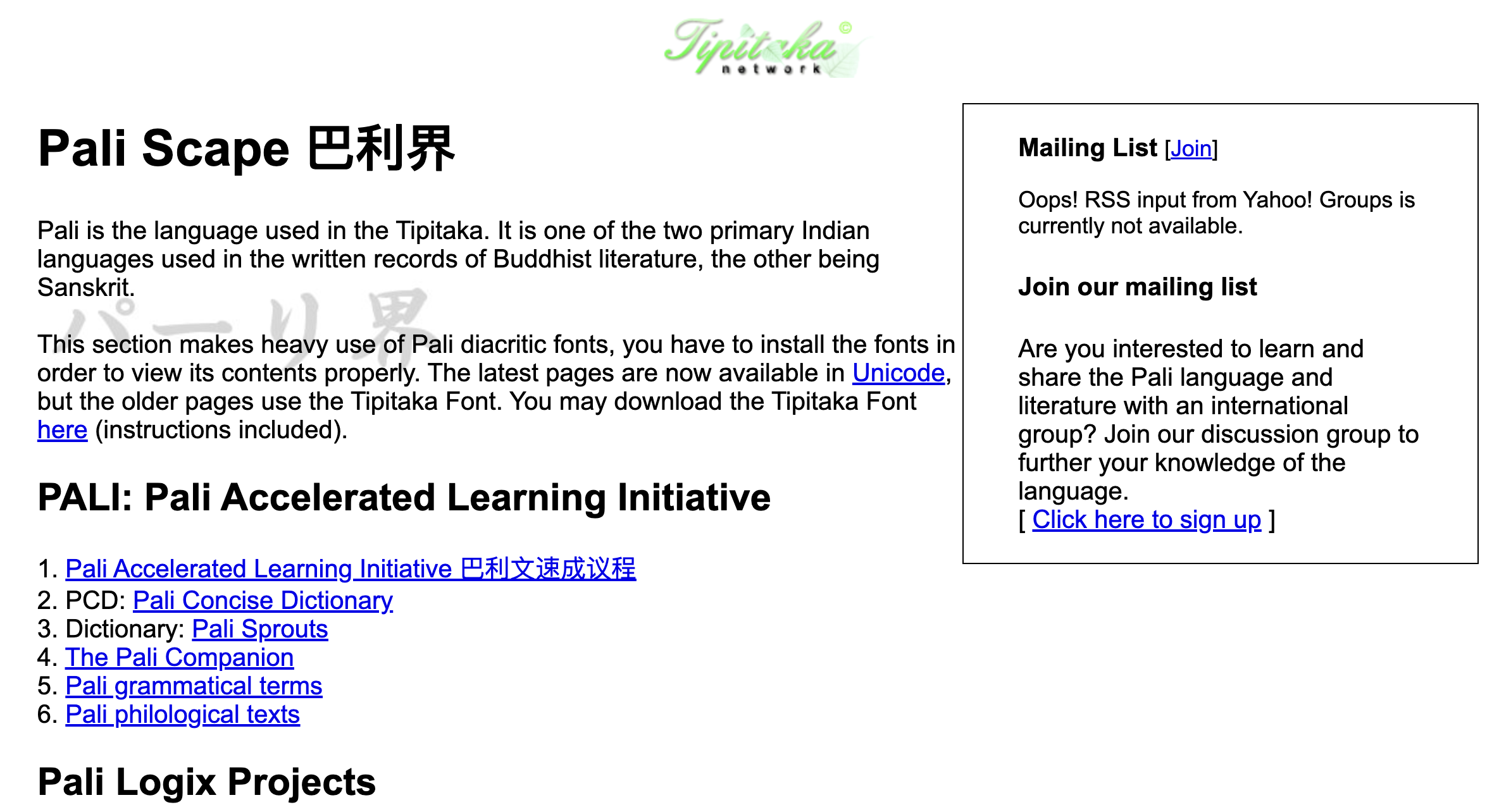Pāḷi Grammar
Pāḷi was the language spoken by the Buddha and employed by Him to expound His Doctrine of Deliverance.
Māgadhī is its real name, and it is the dialect of the people of Magadha—a district in Central India. Pāḷi, “line” or “text”, is, strictly speaking, the name for the Buddhist Canon.
Nowadays, the term Pāḷi is often applied to the language in which the Buddhist texts or scriptures were written.
The Pāḷi language must have had characters of its own, but at present they are extinct.
An Elementary Pali Course
-
It is difficult for any language to convey the full meaning of Buddha doctrine than Pāḷi. Compatibility[1], polysemy[2], synonymy[3], near-synonym[4] and different structures[5] of each different type of grammar can also cause misunderstanding of the main meaning of the text to occur. In addition, the language of translation highly relies on the era and personal purpose[6]. Further, translating through middle languages will result in the original meaning losing its completeness. For these reasons, it would be a serious shortcoming for those investigating Buddhism if they could merely read the translation without comparing and contrasting the Pāḷi text. It can be said that Pāḷi Grammar is not solely crucial in translation but also indispensable in comprehending the genuine sense of Buddhist teachings.
1. Meaning whether this concept can be expressed in that language or not.
2. The same word can have one or several different meanings depending on the context.
3. Many words refer to the same concept.
4. Words that describe concepts that are nearly the same or similar, easily leading to misunderstanding.
5. Here indicates other grammatical properties, such as gender, number, manner, tense division, writing style, and paragraph division.
6. Such as public service, ceremonies, or research(Pali Textbook, Most Venerable Minh Chau)
Pāḷi learning sources
Pāḷi is now taught in many universities both in the East and the West. There is also a desire all over the civilized world at the present day to read the original Pāḷi Texts in order to find out what the Buddha has preached to mankind 25 centuries ago and to see what historical and philosophical treasures are enshrined therein. Therefore, to facilitate the study of Pāḷi, some modern scholars have compiled Pāḷi courses, grammars and readers according to modern methods.
The New Pāḷi Course
Dictionary
Digital
Apps

Pāḷi dictionary with Vietnamese-English-Burmese-Chinese languaes

Pāḷi dictionary with Vietnamese, English, and various languages
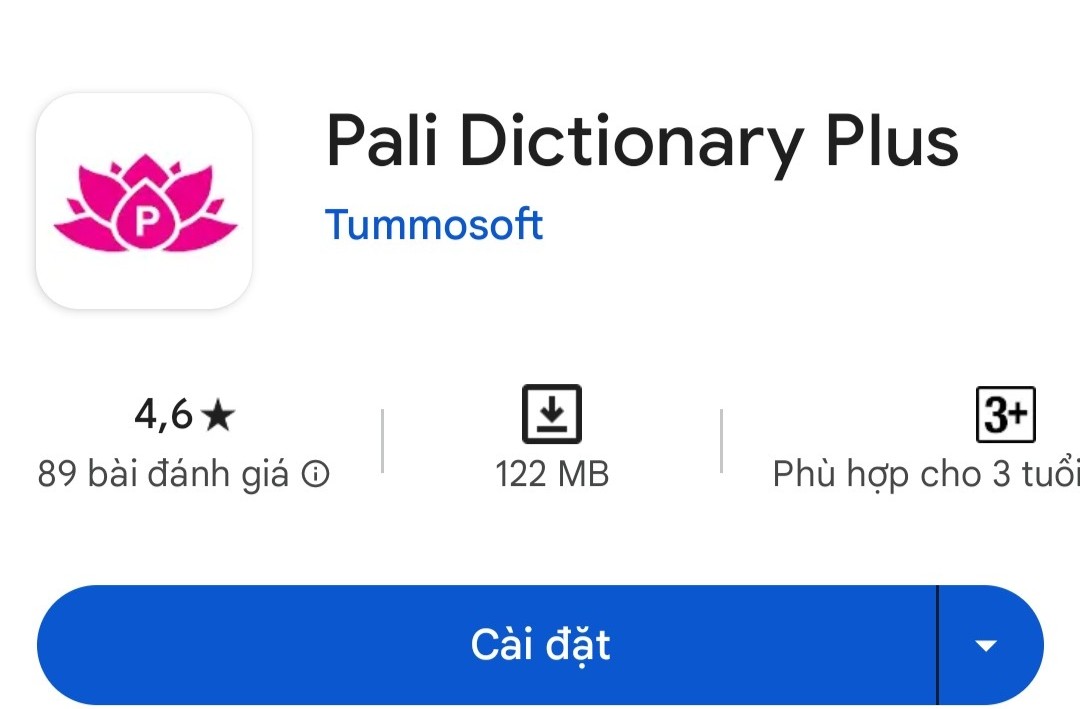
Pāḷi dictionary with various languages
Books
Helpful Videos
Languages of Buddhism (Sanskrit, Pāḷi, Prakrit)
Do We Need Pāḷi?
What is Pāḷi language?
Pali 4.0: A Digital Approach in Learning Pāḷi for the Contemporary Era
